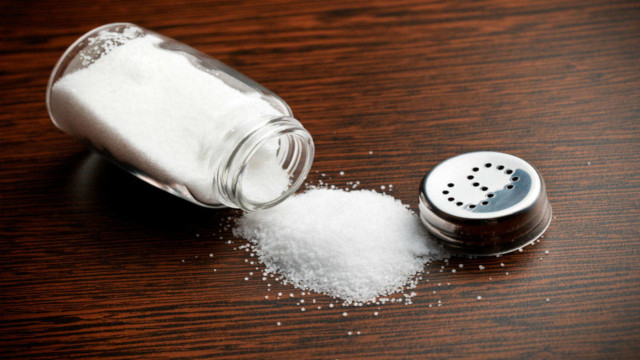Indian Table Salt is 100% Safe for Consumption
Posted on: 08/Dec/2023 2:17:20 PM

In recent times, concerns about the safety of Indian table salt have surfaced, with allegations of cyanide contamination spreading through social media and various online platforms. However, a closer examination of the facts reveals a different story - one that underscores the safety and crucial health benefits of iodized salt in India.
Iodization Journey in India: A Vital Step for Public Health
India`s journey towards ensuring the safety and nutritional value of salt is a remarkable tale. The country recognized the significance of iodine in combating iodine deficiency disorders (IDD), leading to a nationwide effort to iodize salt. Iodine, an essential micronutrient, plays a crucial role in thyroid function and mental development, making its presence in our diet imperative.
Dr Chandrakant Pandav is a member of the National Council for India Nutritional Challenges, popularly known as `The Iodine Man of India` emphasizes the critical role of iodization in promoting public health. He states, "Iodine deficiency poses a serious threat to health, particularly for pregnant women and children. The iodization of salt has proven transformative, ensuring universal access to this crucial nutrient. Essential for physical growth and cognitive development, iodine plays a pivotal role in shaping the overall well-being of children. Its absence during pregnancy and early childhood can result in intellectual disabilities, affecting learning abilities. By providing a consistent and safe source of iodine, iodized salt significantly contributes to the healthy cognitive development of the younger generation".
He further adds "Moreover, iodine deficiency is a primary cause of goitre, characterized by the thyroid gland`s enlargement. Visible as a swelling in the neck, goitre is preventable and treatable through regular iodized salt consumption. Beyond goitre, iodine deficiency can lead to various IDD-related ailments, impacting overall health and individual productivity. Therefore, daily consumption of adequately iodised salt is a healthy habit. India is world leader, "VISHWA GURU" when it comes to iodine coverage within the country. In 1985, the coverage of iodised salt was 5%. By 2018-2019 the coverage of iodised salt rose up to 93%(In a national survey conducted by The All India Institute of Medical Sciences (AIIMS), New Delhi, Nutrition International and Indian Coalition for Control of Iodine Deficiency Disorders (ICCDD) in 2018 � 2019"
Understanding the role of Potassium Ferrocyanide (PFC) in Indian Salt
Addressing concerns surrounding Potassium Ferrocyanide (PFC) in salt requires a clear distinction between PFC and cyanide. It is imperative to underscore the fundamental difference between the two, as the primary misconception arises from equating PFC with cyanide, despite their notable distinctions. Unlike cyanide, PFC is non-toxic when used within recommended limits and, importantltly, plays a crucial role in preventing lump formation in salt, thereby enhancing overall quality and texture.
Significantly, regulatory authorities, including the Food Safety and Standards Authority of India (FSSAI), have established a permissible limit of 10 mg/kg for PFC use. It is important to note that various countries, such as the USA, China, Europe, Australia, and New Zealand, allow Potassium Ferrocyanide at even higher levels. This serves as a robust affirmation that Indian salt is absolutely safe for consumption, even by global standards.
Trust in the Safety and Health Benefits of Iodized Indian Salt
In conclusion, the safety of Indian salt, especially when iodized, is supported by scientific evidence and regulatory affirmations. The journey of iodization in India reflects a commitment to public health, and brands like Tata Salt have played an integral role in this transformative process. As consumers, we can continue to trust and enjoy the benefits of iodized salt, contributing to a healthier and more nourished India.







